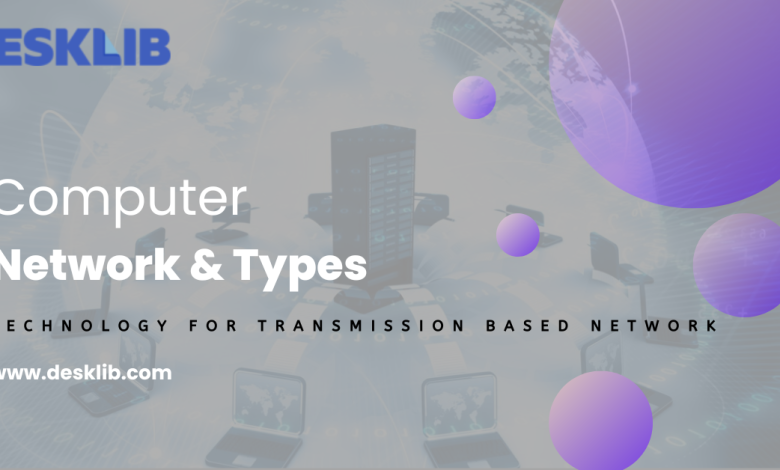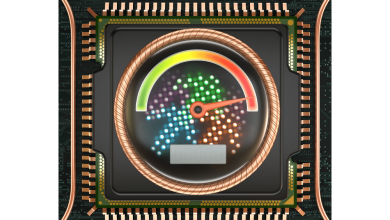Introduction and Types of Computer Networks

A computer network is a collection of connected computers that allow one computer to talk with another and share its resources, data, and apps with another computer. Various computer network types can be categorizes on the basis of their size. It describes as a grouping of two or more autonomous computers that links together for resource sharing using a variety of communication mediums and protocols.
The Networking System includes all modems, transmission equipment, exchange, and information processing systems owned by the Borrower. the process of moving data between small and large data volumes. Both business and educational institutions can employ this technology. It is possible to send digital data such as audio, data, and video files via network technology, which can be set up, configures, and debugs by network specialists. Depending on the needs of the company, users can send messages and data over networking via email or other means.
Networking System Types
It is possible to categorize network technology based on its transmission and scalability. This technology enables the exchange and transfer of data. Further are the component of computer networks.
Technology for transmission-based networks-
There are two principles that are uses in transmission-based network technology: point-to-point and multipoint.
- Point to Point
In a point-to-point network, data can be sent via an unguided medium for wireless networks and a guided medium for wired networks when the sender and receiver (nodes) are physically close to one another. The diagram below shows the point-to-point network technology.
- Multi-point
In multi-point, many nodes are connected linearly and directly utilizing a common medium. The graphic below shows the multi-point network technology.
One of these two connections, such as time-sharing or spatial sharing, is typically uses this form of transmission. Each node in the first connection has a specific time slot for communication; however, in the second connection, simultaneous communication between the nodes is possible.
- Technology for networks at scale
It is possible to develop scalable network types technology employing LAN, MAN, WAN, PAN, and VPN concepts.
- LAN – Local Area Network
The IEEE 802 network, also known as the Local Area Network (LAN), connects gadgets like computers, laptops, and mobile phones over a small distance of between 100m and 10km. Users, speed, range, and mistake rate are what essentially influence the network’s characteristics.
The essential elements of a LAN are as follows:
- A network’s HUB, or “heart,” may be in charge of drawing signals from peripheral devices like printers and scanners. It is capable of transmitting data packets between the transmitter and receiver.
- Backbone cables including twisted pairs, optical fiber, and coaxial cables are employed because of their high bandwidth capacity.
- Network interface card (NIC) Nodes/PC/computer/Host/server/workstation.
- MAN – Metropolitan Area Network
A network that has numerous LANs connected by a networking device to create a metropolitan area network is referred to as a “bridge”.
- WAN – Wide Area Network
Routing is a service that joins various WANs together to establish a network system. The graph below shows how WAN technology works in computer networks.
Additionally, WAN offers two types of variety:
– Government agencies are in charge of managing public wide area networks (WANs).
– Private WAN: The US Military’s Defense department, better known as ARPANET, is expanding this kind of WAN.
Several Wide Area Network components
Three components—a bridge, a router, and a gateway—make up the WAN.
– A bridge is a piece of equipment that joins two or more unconnected LANs.
– A router is a piece of hardware that joins two or more disparate networks.
– A gateway is a type of device that joins networks with different architectural styles. This gateway, for instance, can be use to establish communication between a mobile device with a 4G connection and a landline device with a 2G connection.
- Personal Area Network (PAN)
A personal area network (PAN) is a type of computer network that enables the communication between electronic gadgets that are located in a person’s close proximity. These networks can be wireless, like IR, UWB, and ZigBee, or cable, like USB or FireWire. This network’s typical range is a few meters. Examples include wireless mice, game consoles, printers, bar code scanners, cell phone headsets, and keyboards. This network is typically only uses for private purposes.
- VPN – Virtual Private Network
On the public network, a virtual private network (VPN) is set up to enable user communication and data transmission from sender to recipient. In place of a less secure network, like the internet, this network creates a secure, encrypted link. At the transmitter and recipient ends of this network, the data is encrypts and decodes using tunneling techniques.
Benefits
Having several network types has many advantages. The first and most significant advantage is how adaptable it is. A wider range of network types enables the sharing of more data and communications. It also makes resource sharing easier. Thanks to network systems, file sharing has also gotten simpler. Additionally, it is more reasonable price and cost-effective. The expansion of the storage area will be another benefit.
Constraints
Although, having Different Network Types has its own benefits but it also comes with a set of constraints with it. Firstly, it is costly, has security problems, and necessitates the services of a skilled operator.
As a result, everything here is about network technology or a computer network. This technology use to connect two or more devices so that they can interact with one another. For example, a dial-up device connection between two personal computers network type, such as a wired LAN at work, a Wi-Fi connection at home, underwater devices, or satellite signals around the world.
This technology helps users to send and receive data rapidly and effortlessly, but also has drawbacks that is mandatory to consider. Users need to be aware as depending on this technology on a frequent basis can put them at risk from its flaws and vulnerabilities.



